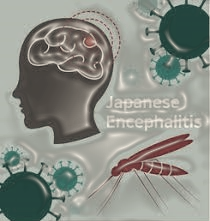Understanding Japanese Encephalitis

WHERE IS IT PREVALENT
Japanese Encephalitis (JE) usually occurs in selective geographical areas (endemic disease) mainly in the Indian subcontinent, China, Korea, Japan and Southeast Asia. In India, the people of Assam and Eastern UP are fighting an outbreak of Japanese Encephalitis (JE) in 2022.
The infection rises especially during the monsoon flood season which starts in June and extends till October.
The state of Assam was hit recently with floods and now the people of the state are battling encephalitis.
Children in the age group of 5-15 years living in the endemic areas are most commonly affected, as adults are largely immune.
HOW IS IT CAUSED
Japanese Encephalitis (JE) occurs due to a viral infection that directly affects the brain sometimes leading to coma and finally death. Japanese Encephalitis Virus (JEV) is generally spread by mosquitoes, specifically those of the genus Culex. Pigs and wild birds serve as reservoirs for the JEV.
The Culex mosquito, breeds in the stagnant water of puddles, ditches and fields, and in artificial containers like cans, bottles, and storage tanks.
WHAT ARE THE SYMPTOMS
Most of the cases are asymptomatic. It is documented that for every 1 case of Japanese Encephalitis, there are almost 500-1000 cases who have the virus but do not manifest any disease.
The incubation period (time from infection to manifestation of symptoms), is around 5-15 days and mild-moderate infections present with fever and body ache, and muscle pain.
However, severe infections can have neurological manifestations. These include neck stiffness, headache, change in behavior, stupor, confusion, and disorientation, tremor, occasional convulsions, and coma.
HOW IS IT TREATED
There is no antiviral treatment or specific medicines for Japanese Encephalitis. The treatment is supportive with rest and analgesics (medicines for fever and body ache) to relieve the symptoms and stabilize the patient.
While managing JE one needs to focus on nutritional therapy (healthy diet), and adequate hydration with fluids and electrolytes.
Treatment of convulsions (with anticonvulsant drugs) and prevention of any secondary bacterial infection or sepsis (with antibiotics) may also be required. Maintaining the airway and breathing is crucial in severely ill patients.
HOW CAN IT BE PREVENTED
Prevention of the disease includes control of the breeding of the vector (Culex mosquitoes) of JEV by fogging with ultra-low levels of insecticides in the community. Along with this sleeping in mosquito nets, and wearing full-sleeve clothes are recommended.
Stagnant water areas and storage tanks are common breeding areas in residential complexes. It is important to maintain hygienic surroundings and prevent water stagnation. Pig sheds should not be near residential areas.
There is a vaccine available for JE prevention, and it is important to raise awareness of the same and vaccinate all children 1-15 years in endemic areas.
Also read:
Is eating Litchis a risk to health? – busting the myths with facts

